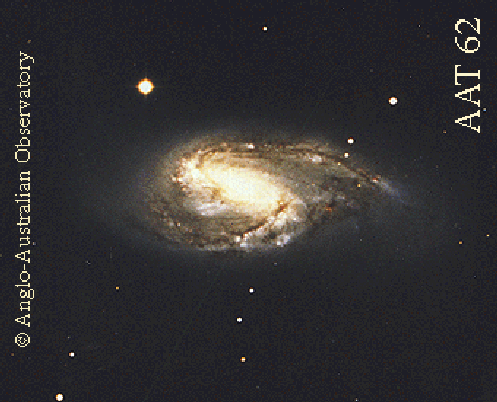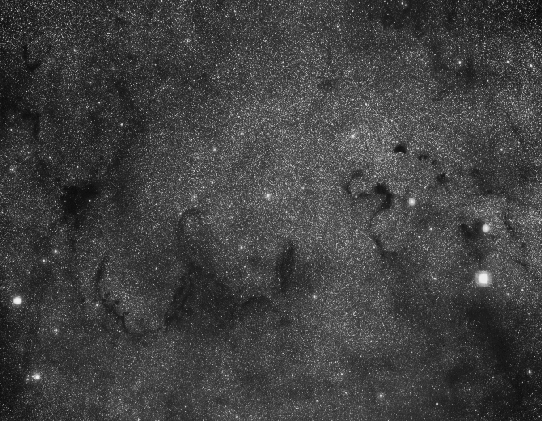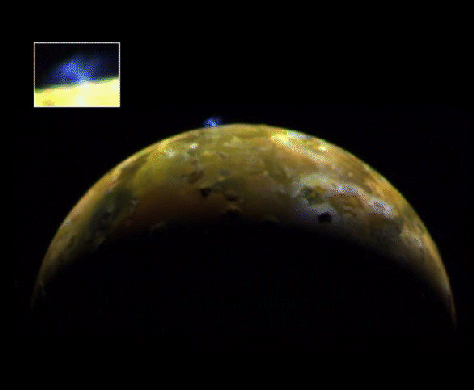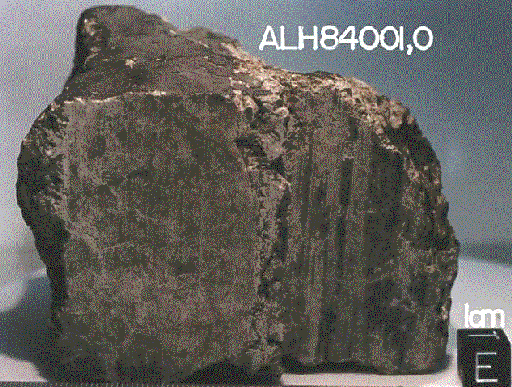NASA APOD #418-426
#418 Tomorrow's picture: August 10, 1996
“Spiral galaxy M66 is largest galaxy in the a group known as the Leo Triplet. M66 is somewhat peculiar because of its asymmetric spiral arms. Usually dense waves of gas, dust, and newly formed stars - called spiral density waves - circle a galactic center and create a symmetric galaxy. Gravity from nearby Leo Triplet neighbor M65, however, has probably distorted this galaxy. In M66, intricate long dust lanes are seen intertwined with the bright stars that light up the spiral arms. Recent research indicates that M66 is unusual in that older stars are thought to heat up the dust in the galaxy's central bulge - a job attributed to young and hot stars in many other galaxies. M66 is famous for a powerful "Type Ia" supernova that was observed in 1989. Stellar explosions like this are thought nearly identical and so by noting how bright they appear, astronomers can estimate their true distance - and therefore calibrate the scale of the universe!"
Copyright: Anglo-Australian Telescope
Board
#419 Tomorrow's picture: August 11, 1996
“What slithers there? The dark curly lanes visible in part of the constellation Ophiuchus belong to the Snake Nebula. The Snake Nebula is a series of dark absorption clouds. Interstellar dust grains - composed predominantly of carbon - absorb visible starlight and reradiate much of it in the infrared. Infrared is a band of light so red humans can't see it. This absorption causes stars in the background to be blocked from our view - and hence the appearance of noticeable voids on the sky."
Copyright: B. Wallis and R.
Provin
#420 Tomorrow's picture: August 12, 1996
“Spiral galaxy M65 is a normal spiral galaxy not unlike our own Milky Way. In fact, M65 is a typical spiral galaxy of a type that could be found anywhere in the local universe. Given a morphological type of "Sa", M65 shows tightly wrapped spiral arms and a large nuclear central bulge. The central bulge stars are older and redder than disk stars, which appear more blue. Stars in the bulge of the our own Milky Way Galaxy are also typically older and redder than stars in the disk where our Sun resides. M65 is a member of the Leo Triplet of galaxies, along with its neighbors M66 and NGC 3628. Although it appears that M65's gravity has distorted M66's symmetry, M65's symmetry seems unaffected by M66. M65 is located roughly 35 million light years away, so that light recorded today left after the fall of the dinosaurs but when many land mammals were just evolving on Earth."
Copyright: Anglo-Australian Telescope
Board
#421 Tomorrow's picture: August 13, 1996
“Voyager spacecraft images of Europa's surface, like the one above, are suggestive of sea ice on Earth. The criss-crossing dark streaks may indeed be cracks in its ice-covered surface caused by Jupiter's tidal stresses accompanied by the freezing and expansion of an underlying layer of water. This tantalizing prospect of oceans of liquid water beneath its frozen surface has helped make the smallest of the Galilean moon's of Jupiter a planned focus of the Galileo spacecraft's ongoing mission to explore the Jovian system. New Europa images and results from the Galileo mission were released today revealing details which further suggest that Europa's icy surface was once - and may still be - supported on slush or liquid water."
Copyright: Public domain
#422 Tomorrow's picture: August 14, 1996
“Details of the crazed cracks criss-crossing Europa's frozen surface are apparent in this mosaic of the Galileo spacecraft's latest images of Jupiter's ice-covered moon. Curious white stripes, also seen by Voyager, are clearly visible marking the center of the wide dark fractures. One theory suggests that "dirty geysers" erupting along the cracks deposited darker material followed by a flow of cleaner water ice which produced the stripe. The above image also shows an impact crater about 18.5 miles in diameter surrounded by white ejecta (lower left) and a curving x-pattern at bottom left which suggests fractures between icy plates filled with slush frozen in place. Is there now or was there ever liquid water beneath Europa's surface? These latest results still hold out that possibility -- and so the possibility of life. Europa, along with Mars and Saturn's moon Titan is considered to be one of the few places in our Solar System, beyond Earth, where primitive life forms could have developed. Galileo's close flyby of this tantalizing moon is scheduled for December of this year."
Copyright: Public domain
#423 Tomorrow's picture: August 15, 1996
“Io's surface is active. Geyser-like eruptions from volcanoes on this Jovian moon were seen by both Voyager spacecraft in 1979 and were also spotted this year in late June by Galileo's camera from a distance of about 600,000 miles. The blue plume seen at the moon's edge (magnified in the inset) arises from Ra Patera, a large shield volcano, and extends about 60 miles above the surface. The blue color is attributed to condensing and freezing sulfur dioxide gas. Galileo images have also revealed that the plume glows in the dark - perhaps due to fluorescence of excited sulfur and oxygen ions. Io's surface is cold, its temperature averages about -230 degrees Fahrenheit, so why is it so active? The most likely cause is the gravitational tug of war over Io between Jupiter and the other Galilean moons which perturbs Io's orbit. The orbital changes would result in tidal force variations heating Io's interior and and generating the sulfurous volcanic activity."
Copyright: Public domain
#424 Tomorrow's picture: August 16, 1996
“The nebula cataloged as NGC 604 is a giant star forming region, 1500 light years across, in the nearby spiral galaxy, M33. Seen here in a snapshot by the Hubble Space Telescope, over 200 newly formed, hot, massive, stars are scattered within a cavern-like, gaseous, interstellar cloud. The stars irradiate the gas with energetic ultraviolet light stripping electrons from atoms and exciting them - producing a characteristic nebular glow. The details of the nebula's structure hold clues to the mysteries of star formation and its effect on the evolution of galaxies."
Copyright: Public domain
#425 Tomorrow's picture: August 17, 1996
“The famous Martian meteorite pictured above houses microscopic structures interpreted by many as fossils of ancient Martian life. How do you find a meteorite from Mars here on Earth? On a typical day, several large rocks fall to Earth from space, usually winding up in the oceans. If they do not burn up in the Earth's atmosphere they are called meteorites. (Danger from falling meteorites is rare: the average person would have to repair meteorite damage to their home about every 100 million years.) Most meteorites falling on land are never located or identified - appearing similar to other rocks to the untrained eye. In certain places in Antarctica, however, meteorites stand out from the white frozen ice and snow beneath them, as if they were just left yesterday. When the above meteorite was found in Antarctica, it was considered unusual because of its grey color. So far, about 12 Martian meteorites of similar mineral compostion have been found. One of these contains minute pockets of gases identical in isotopic composition to the Martian atmosphere as determined from the Viking measurements - implying the rocks indeed originated on Mars. These Martian meteorites are typically 1.3 billion years old or less, however, the one containing the potential microfossils appears to have an age of about 4.5 billion years."
Copyright: Public domain
#426 Tomorrow's picture: August 18, 1996
“Here is a rather typical quasar. But since quasars are so unusual it is quite atypical of most familiar objects. Of the two bright objects in the center of this photo, the quasar is on the left. The bright image to quasar's right is a star, the faint object just above the quasar is an elliptical galaxy, with an apparently interacting pair of spiral galaxies near the top. Quasars appear as unresolved points of light, as do stars, and hence quasars were thought to be a type of star until the 1960s. We now know that the brightest quasars lie far across the visible universe from us, and include the most distant objects known. Quasars may occupy the centers of galaxies and may even be much brighter than their host galaxies. In fact, the centers of many nearby galaxies have similarities to quasars - including the center of our own Milky Way Galaxy. The exact mechanism responsible for a quasar's extreme brightness is unknown, but thought to involve supermassive black holes. This picture represents a milestone for the six-year-old Hubble Space Telescope as it was picture number 100,000, taken on June 22, 1996."
Copyright: Public domain
Upvote! Resteem! Comment! As you like it! Thank you for attention!








